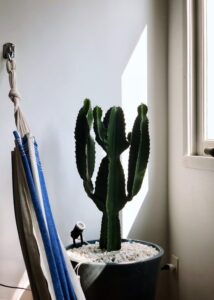Beginner Guide to Bullet Journaling: Organize Your Life Creatively

Starting a new habit can sometimes feel overwhelming. If you’re looking for an effective and creative way to organize your tasks, thoughts, and goals, bullet journaling might be the perfect solution. This beginner guide will help you understand what bullet journaling is, how to get started, and tips to make your journal both functional and enjoyable.
What Is Bullet Journaling?
Bullet journaling is a flexible planning system created by Ryder Carroll. It combines a to-do list, diary, planner, and sketchbook in one notebook. The beauty of bullet journaling lies in its simplicity and adaptability to your personal needs.
Unlike traditional planners, bullet journals don’t come pre-filled with dates or tasks. You create your own layouts and decide what to include, from daily tasks to long-term goals.
Why Try Bullet Journaling?
– Customization: Tailor your journal exactly to how you want to organize your time and thoughts.
– Productivity: Keep track of tasks and deadlines, helping to reduce stress.
– Creativity: Use drawings, colors, stickers, and other design elements to make journaling fun.
– Mindfulness: Reflect on your day, habits, and progress regularly.
What You Need to Get Started
One of the best parts of bullet journaling is that you don’t need fancy supplies to begin. Here’s all you really need:
– A notebook: Any notebook will do — dotted, lined, or blank pages.
– A pen: Start simple with a basic pen. Later, you can add colored pens or markers if you like.
– A ruler (optional): Helps keep lines and layouts neat.
Basic Components of a Bullet Journal
To create the framework of your journal, you’ll use a few key symbols and sections:
1. Index
The index is the map of your journal. It’s where you list the pages and their topics so you can find information quickly. Leave a few pages blank at the beginning for this.
2. Future Log
This section holds future appointments, events, and goals that might not fit into your current month or week.
3. Monthly Log
In this area, you create a calendar view or a list of the month’s days and mark important deadlines or events.
4. Daily Log
Write your daily tasks, appointments, and notes here. Tasks are often marked with bullets or symbols.
5. Collections
These are specialty lists or notes, such as books to read, habit trackers, or project planning.
6. Signifiers
Symbols that help you organize tasks quickly. Common examples include:
– • (dot) for tasks
– ○ (circle) for events
– – (dash) for notes
– X for completed tasks
– > for migrated tasks (moved to another day)
Step-by-Step: Creating Your First Bullet Journal
Step 1: Set Up Your Index
Reserve the first 2–4 pages of your notebook for the index. Leave space for page numbers and titles.
Step 2: Create a Future Log
Divide the next few pages into 6 or 12 sections—one for each upcoming month. Use this to jot down future appointments or goals.
Step 3: Build the Monthly Log
Create a calendar or list of dates for the current month. Write down important events or deadlines as they come up.
Step 4: Make Your First Daily Log
Start each day with the date at the top of a blank page or section. Add your tasks and notes using your signifiers. Review tasks at the end of the day, marking completed items and migrating unfinished tasks.
Step 5: Add Collections
Create pages for habits, meal plans, reading lists, or anything you want to track or explore.
Tips for Staying Consistent
– Keep your journal accessible: Carry it with you or have it on your desk.
– Start simple: Don’t feel pressured to make everything artistic or perfect.
– Use it daily: Spend a few minutes each morning or evening planning or reflecting.
– Experiment: Try different layouts or collections until you find what works best for you.
Creative Ideas to Personalize Your Journal
– Add color-coding for different task categories.
– Use washi tape or stickers to brighten pages.
– Sketch or doodle alongside notes.
– Include motivational quotes or affirmations.
– Track your moods or fitness progress.
Common Mistakes and How to Avoid Them
– Overcomplicating layouts: Keep your first journal simple, then add complexity gradually.
– Neglecting the index: Without an index, important pages can get lost.
– Forgetting to review: Daily or weekly reviews help you stay on track and update your tasks.
– Being too rigid: Allow your journal to evolve with your needs rather than sticking to one format.
Final Thoughts
Bullet journaling offers a unique and adaptable way to organize your life. Whether you want to increase your productivity, track habits, or simply express yourself creatively, a bullet journal can be a helpful tool. Start small, be patient with yourself, and remember that your journal is for you—it doesn’t have to be perfect.
Happy journaling!




